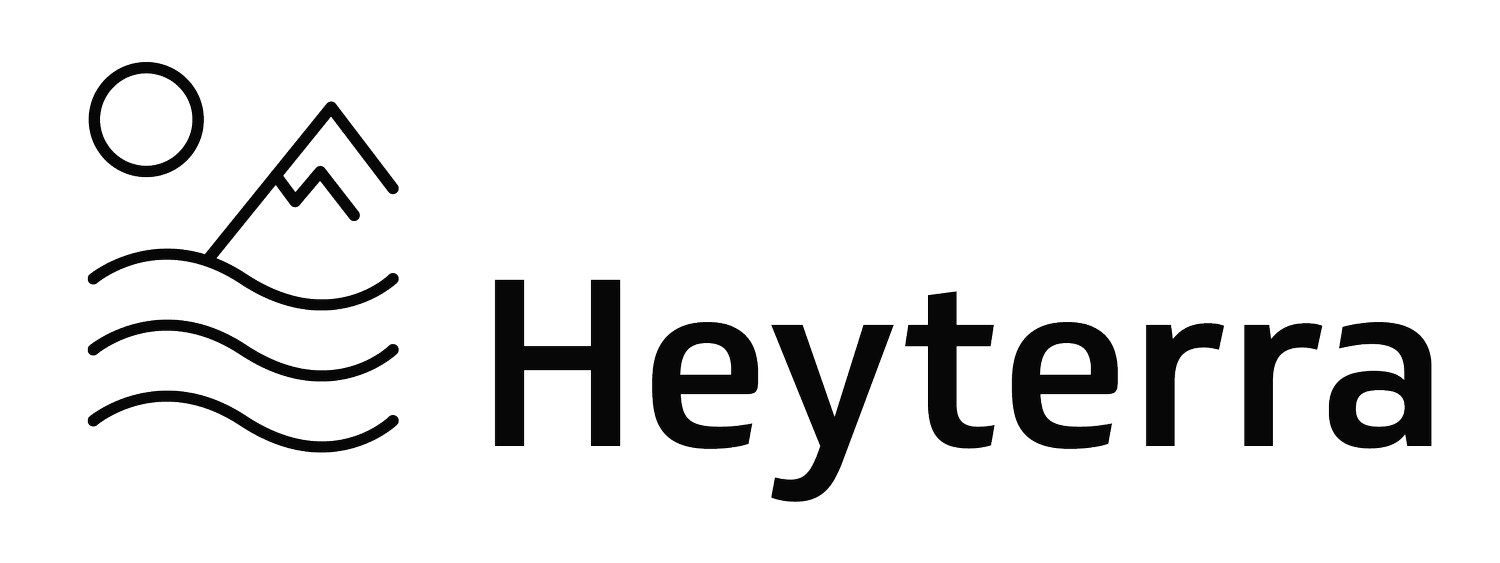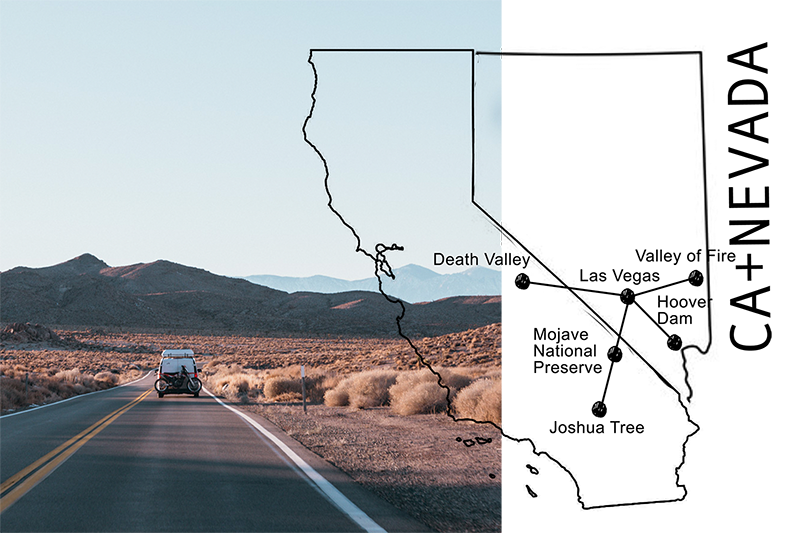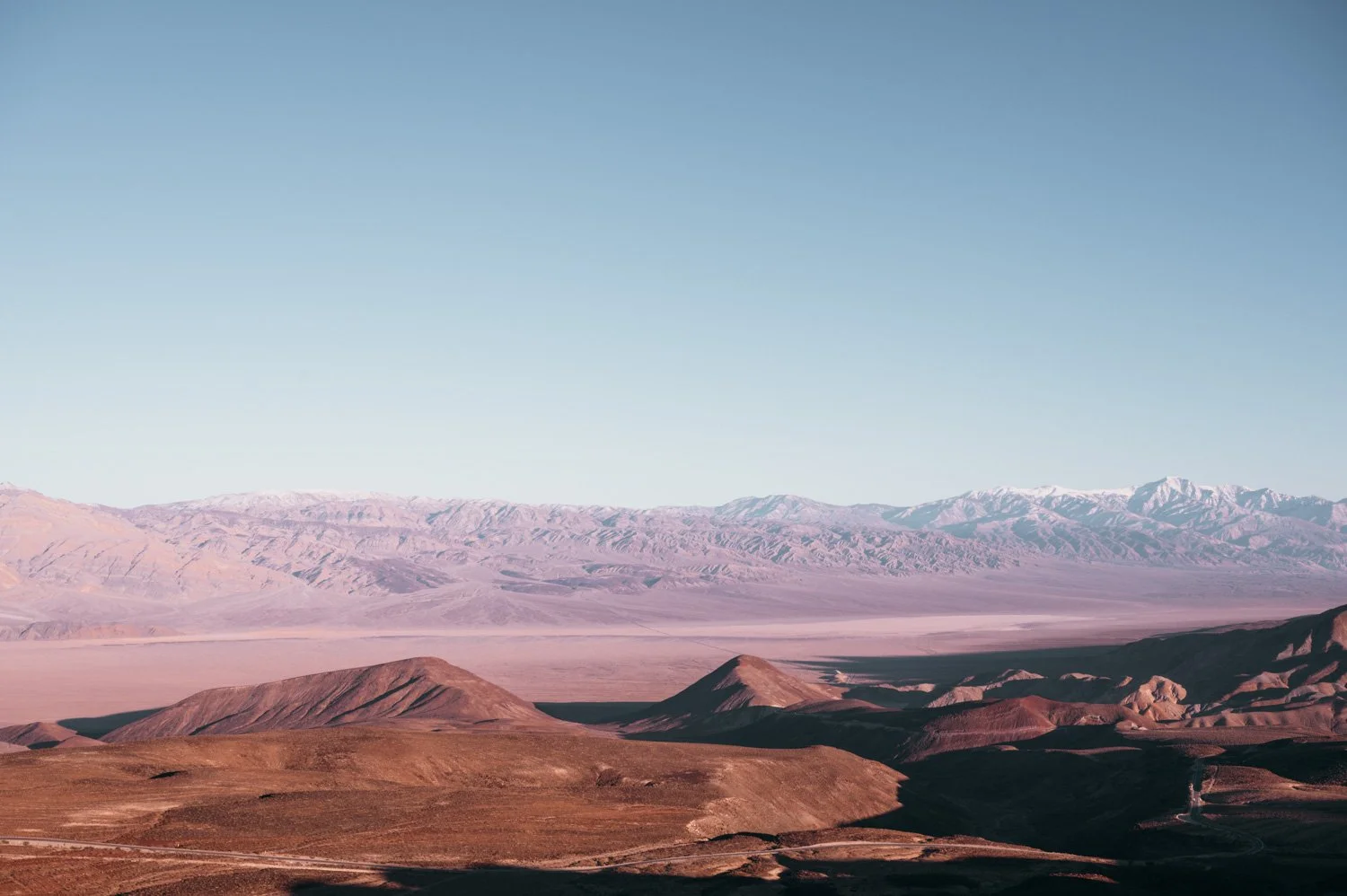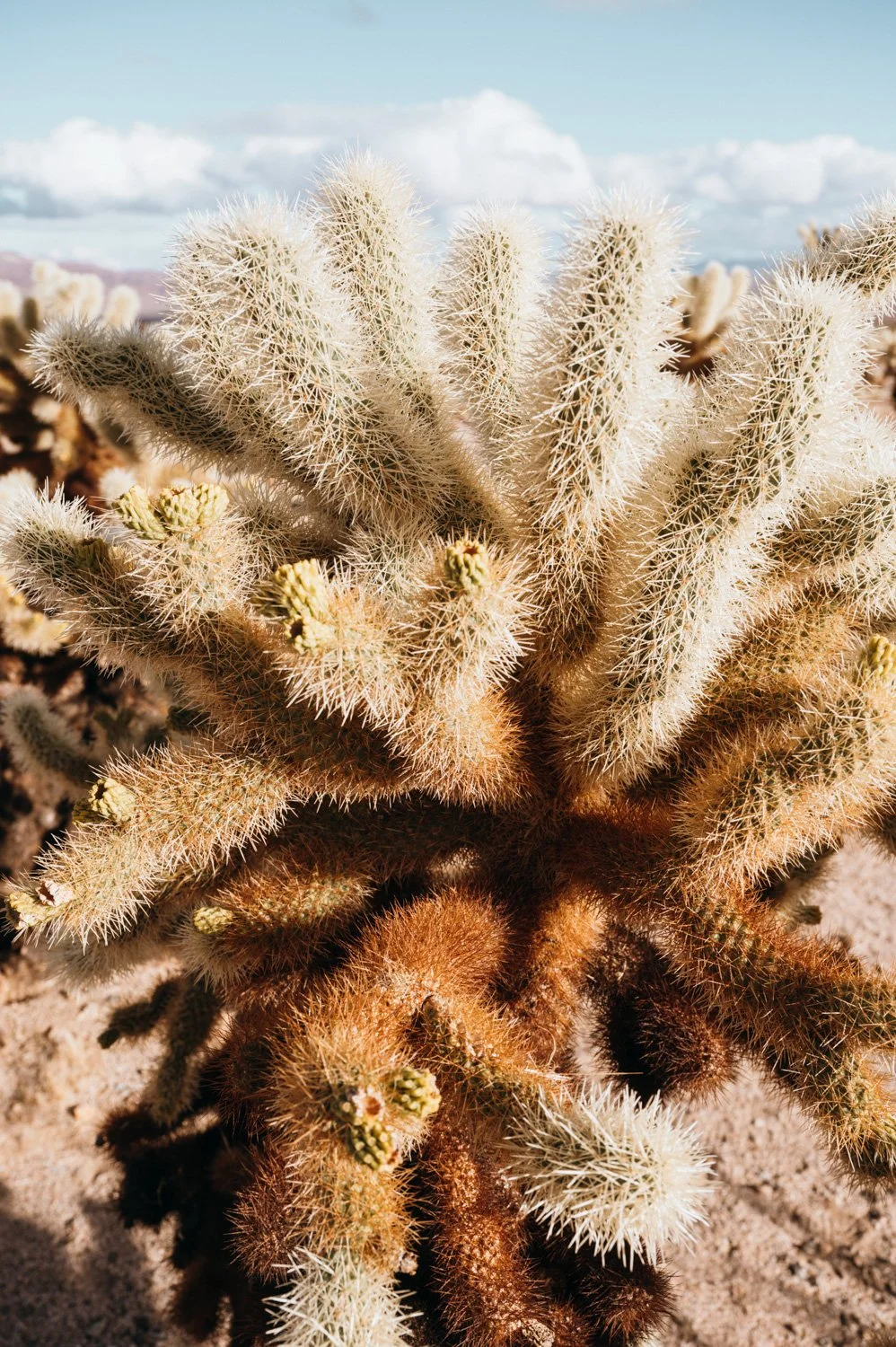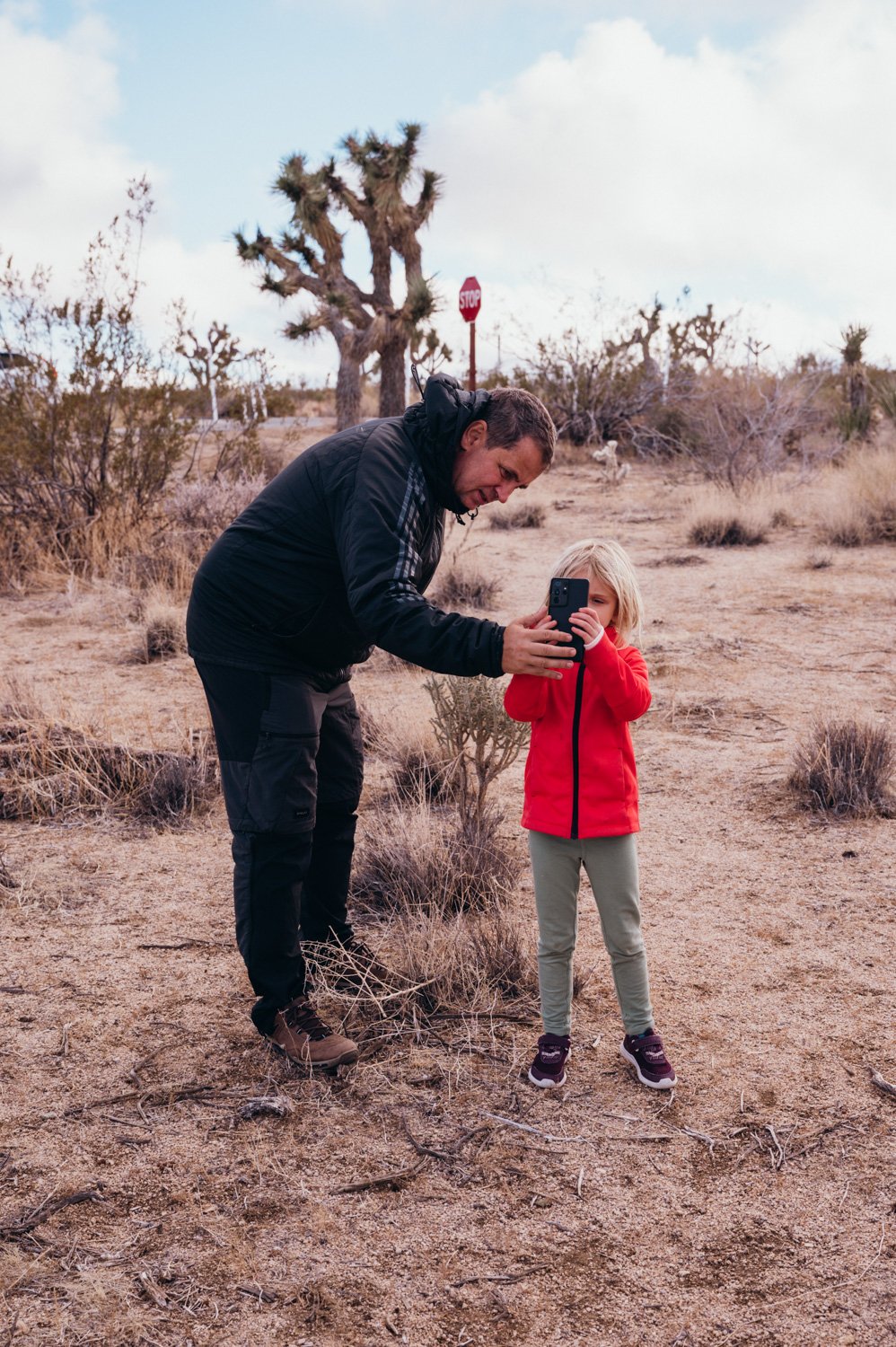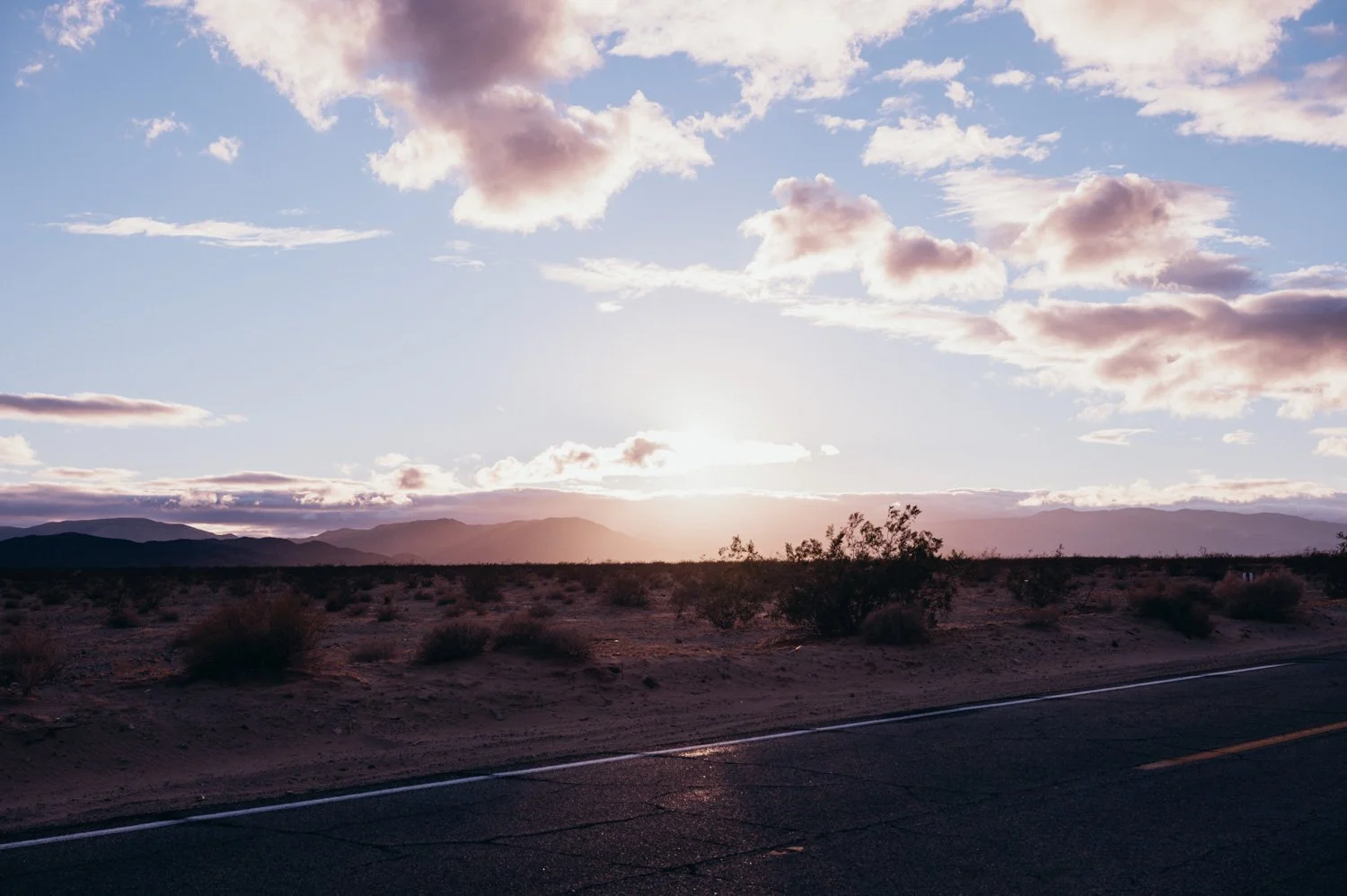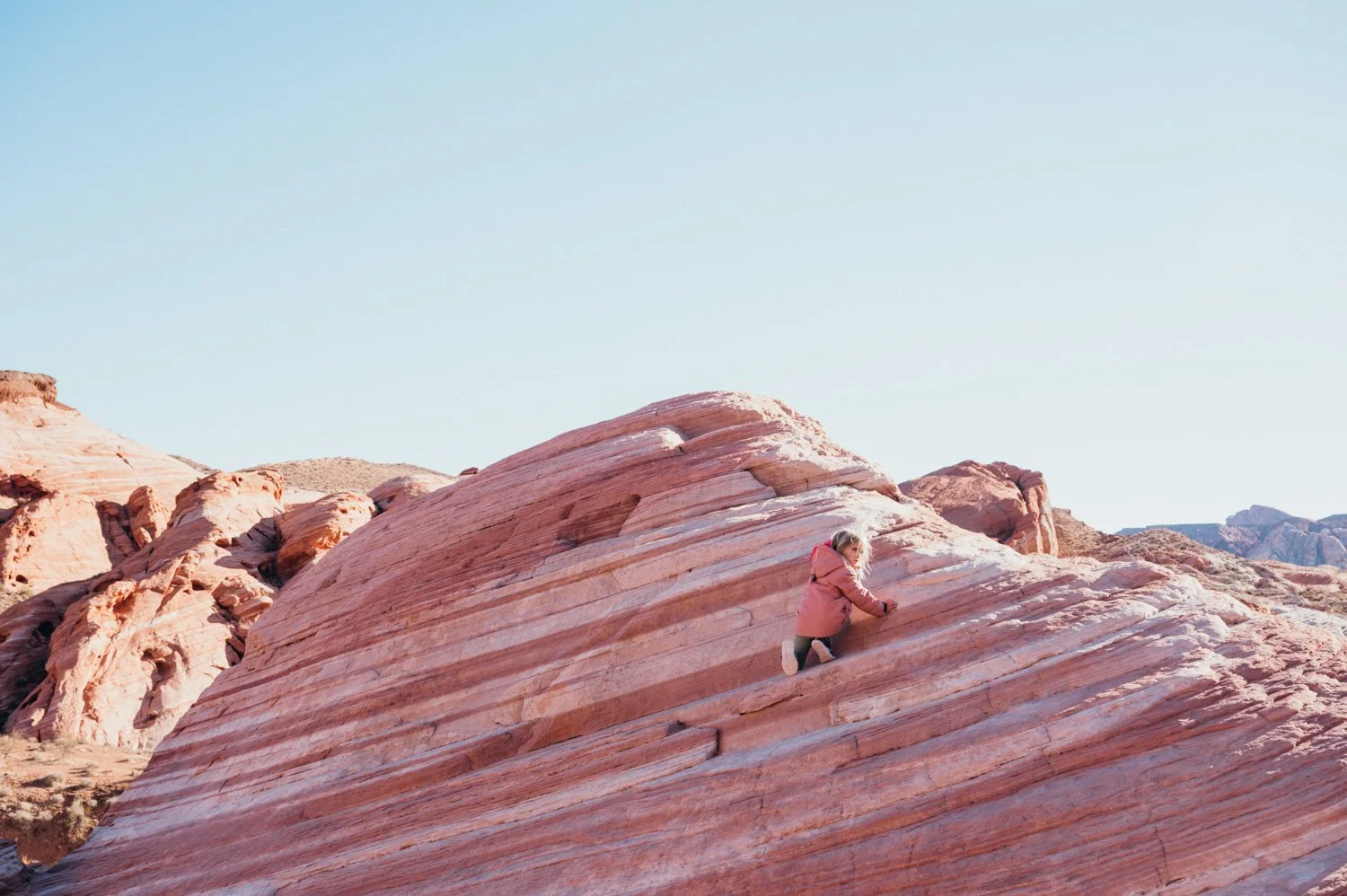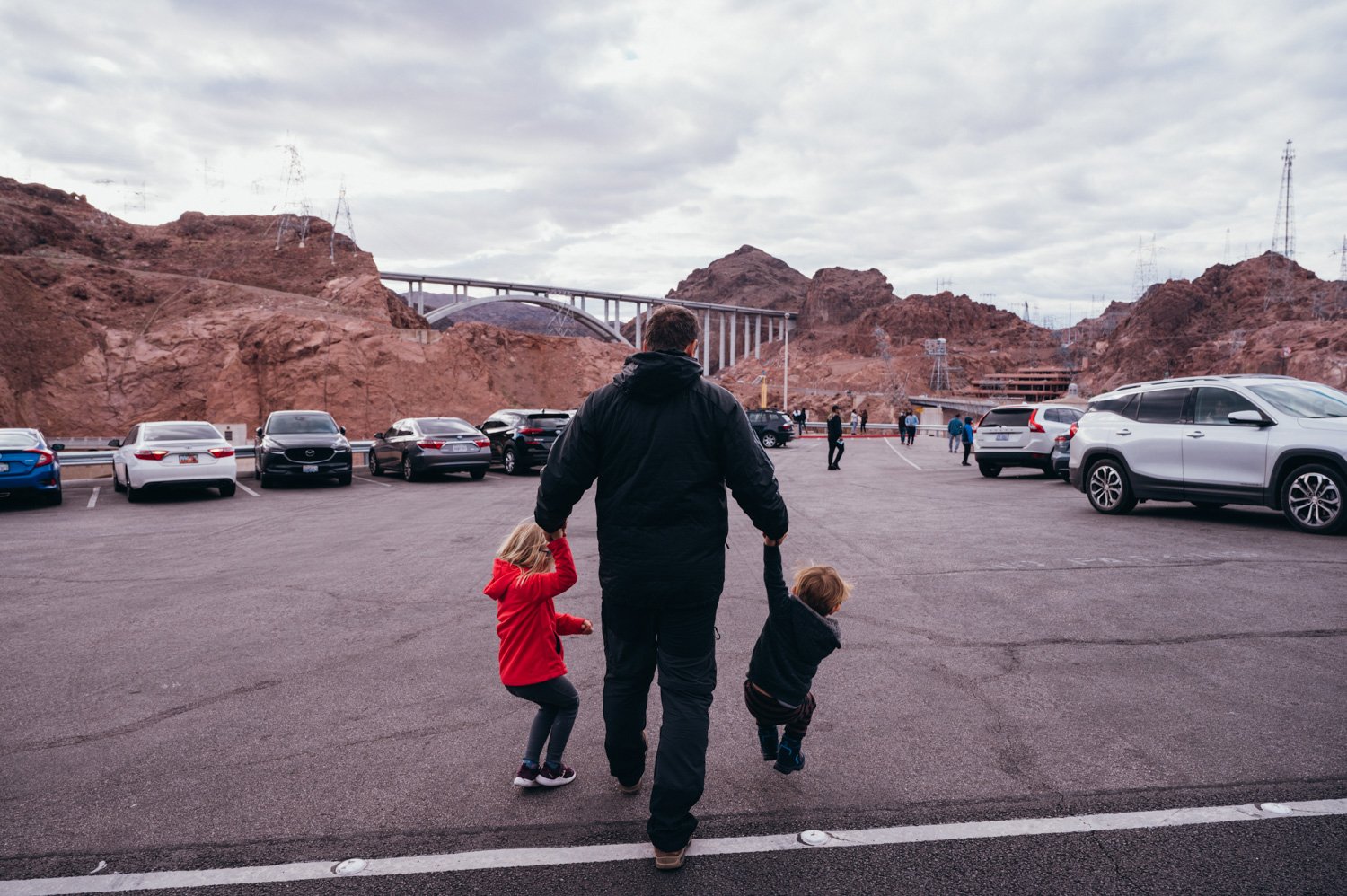Winter U.S. Southwest Road Trip with Kids
From foot-surfing the Fire Wave to spotting jackrabbits in Joshua Tree, winter is one of the best times for exploring southwestern California and Nevada with kids.
Deserts, with their wide open spaces and extremes, offer up the best empty canvasses for imagining all the possibilities— including what kind of world we want to live in.
Growing up in southern California, I did my fair share of camping trips with friends. I remember watching the Hale-Bopp comet careen across the sky in the Anza Borrego Desert, Pearl Jam blasting from our 4Runners, freezing in our tent at night and sweltering by sunrise.
But now I’m a mom (and I still love Pearl Jam), and I want to pass on the mystery and magic of the desert to our kids. So we did a road trip through the southern part of California and Nevada over the holidays. Winter is one of my favorite times to head out into the desert— with smaller crowds, cooler temps and pristinely clear colors for photography, it’s a perfect, chilly adventure for a long weekend.
We bundled up and drove across the epic pinks and oranges of the landscape, foot-surfed the Fire Wave and tumbled down the Mesquite Dunes. We followed the histories of the lost 49ers across the salt pans of Dead Valley and learned about the revolutionary design of the Hoover Dam. We met park rangers who all give us a widened imagination for how we can keep exploring our U.S. parks, one of the most standout elements of the American story.
So pile in the back of the truck with us: this excursion is totally possible for families with little ones!
Our Route- Joshua Tree National Park - Mojave Reserve - Hoover Dam - Valley of Fire State Park- Death Valley National Park
Safety First
Deserts can be as life-threatening as they are beautiful, so make sure to read up on the region’s information to ensure sure you and your family stay safe and are adequately prepared.
Hydration: Even if you’re doing short hikes in the winter desert, bring enough water (x2) and snacks.
Weather & Clothing: The National Park Service has real-time updates for weather conditions. For winter excursions, bring layers, jacket and hats— it can get cold out there! Wear closed-toe shoes to protect little feet from prickly plants & creatures. Sunscreen is always a good idea, even with the short winter light. For littler legs, bring a baby carrier for when they get tired.
Animals & Slithery Creatures: This goes without being said, but do not interact with wild animals in any way and try not to not to disturb their habitat. Take all food and trash out with you, and drive slowly in the case a Desert Tortoise crosses the road.
Be aware of where you’re walking, and we know for kids it’s nearly impossible, but try to move slowly. Avoid holes and stepping under bushes, never touch a dead snake (they can still inject venom).
*If you do get bitten by anything, stay calm, call 911, keep the bite below the heart if you can, and get the victim to the nearest medical facility ASAP.
Gas: Fill up your tank before going into the parks, and be aware that in parts of the parks there can be no cell reception.
Hot Tip: America The Beautiful Pass
If you’re planning to visit more than a few national parks, grab the the annual America the Beautiful pass. The pass covers entry fees to all 59 national parks in the country, either online or from a ranger.
And make sure to read our piece about free entries and days throughout all the parks, as well as bonus entry for fourth graders!
Joshua Tree National Park
If you’re driving from the west, stop in Pioneertown at one of our favorite spots for BBQ, Pappy & Harriet’s, and if you’re overnighting here, the Pioneer Motel was built in the 1940s and has a slew of tiny, charming rooms.
We love Joshua Tree for its epic combination of high desert and low desert. President Roosevelt deemed it a national monument in 1936 and then became a national park in 1994. Head to the Joshua Tree Visitor Center which is situated 5 miles outside of the West Entrance and about 15 minutes from Pioneertown, and there are two other entrances if coming from a different direction There are three entrances to the park – Highway 62 in the North, and a Southern entrance off Highway 10.
We had fun exploring the Cholla Cactus Garden Trail, about .25 miles, until my husband got a handful (and I mean a handful) of prickles stuck in his bum through his pants. The cholla (nicknamed the “teddy bear cactus” because that is exactly what it looks like)— and is anything but. I spent 30 minutes trying to pull out the thorns with tweezers, so be aware!
Other tracks we liked were the Hidden Valley Trail (1 mile-loop) and a great place to see the iconic Joshua Tree, the Skull Rock Nature Trail (or if legs are getting tired, climb around the rocks here, and Jumbo Rocks, which are found on the Skull Rock Trail.
Mojave National Preserve
The Mojave National Preserve is Situated directly north of Joshua Tree, you can drive right through on your way up to catching the I-15 to Vegas. It’s worth stopping through at the very least to note the difference in landscape and vegetation between the various parks. President Obama designated three national monuments in the Southern California desert, connecting critical ecosystems between the Mojave and Joshua Tree— the largest desert conservation area in the world.
The Mojave Desert is noticeably greener than Death Valley National Park. Check out the Castle Mountains, Sand to Snow and Mojave Trails National Monuments, and if you’re just driving through, keep your eyes peeled for coyote, jack rabbits, bighorn sheep and even cougars: animal-spotting is one of the best activities here.
Can you Sustainably Stay in Vegas?
While we’re not the hugest fans, if you’re not camping, Las Vegas is the best location for staying centrally to reach all of the area’s beautiful parks & landmarks easily. The city was built on overconsumption & exploits so much water, electricity, & food, so it’s important to do our part as sustainable travelers here.
Choose a hotel that is making steps to implement sustainable practices, limit the water we use, turn off lights when we leave our hotel rooms, and bring your reusables with. With enough amplification, hopefully hotels will start to follow suit.
The Hoover Dam
Water is life, and there’s no better way to see that than in the desert. The Hoover Dam is a glaring signal of how fragile our ecosystem here is, literally marked by a water line.
Constructed during the Great Depression, the dam is a concrete arch-gravity gestalt and an epic architectural achievement (future architects, this is a must!). It was a such a source of such national pride that thousands of people journeyed through the desert to witness it. The reservoir generates hydroelectricity and supplies water to about 25 million people across tribal lands, farms and cities across the southwest.
Visiting the dam is easy, parts of it are free, and mostly safe for kids to walk around— just keep an eye for traffic and of course no climbing on the walls. Access to the center is ticketed, and inside there is a series of interactive displays where older kids can learn about electricity and engineering. There’s also ample information signposted across the dam, which is free.
Ways to Honor the Indigenous Experience
Honoring, incorporating and learning from local indigenous group positively impact the community & the travel experience.
Learn about the Southern Paiute (Nuwu) people when visiting Valley of Fire State Park.
Learn about the indigenous land you’re standing on with the Native Lands app.
Education about Nevada’s Native American tribes, the Timbisha Shoshone in Death Valley and Joshua Tree’s surrounding indigenous communities.
Visit the Clark County Museum to learn more about the history and culture of the ancient Pueblo, the Southern Paiute (Nuwu) people and the heritage of Las Vegas.
Nat Geo Kids features indigenous regions in the U.S.
Valley of Fire State Park
Named after the almost neon pink Aztec sandstone formed more than 150 million years ago, it is not an exaggeration to feel like you’re surfing on fire rock here. It’s also an important cultural area to the Southern Paiute (Nuwu) people, where you can see incredible examples of rock art dating back thousands of years within the park. This was one of our favorite parks and less than an hour from Vegas, perfect for a half-day trip.
We did the Seven Wonders Loop Trail, around 2 miles (3.2 km) that comprised of seven incredible geological sites including the Fire Cave, the Thunderstorm Arch, the Pink Canyon and the magnificent Fire Wave. Kids will be totally entertained climbing up and around these rocks for hours, and if you want to walk more, can connect to the White Domes Trail (1.5 miles) from there.
Death Valley National Park
Welcome to hottest, driest and lowest national park. The thought of having to cross this as the 49ers did these scorching salt pans in the 1800s during the Gold Rush is truly soul-rattling, especially after seeing it with the naked eye. The park itself is about 150 miles of designated wilderness backcountry roads, so it’s easy to get overwhelmed by the sheer size of it.
We came in from the north and hiked around Zabriski Point, Mesquite Sand Dunes on our way out. We didn’t do too much here, but we know families who have hiked in Golden Canyon, Badwater Basin Salt flats, the Ubehebe Crater and more of the southern part of the park and loved it.
As with all of the above parks, make sure you’re completely prepared for the elements with water, supplies, gear and planning. Mother Nature is not to be trifled with!
More Winter Inspiration
Freeride world champion and professional snowboarder Aline Bock made a film about becoming a mom of twins. Check out our interview with her.
Polar Explorer and Antarctic Ambassador Susan Adie shares her thoughts about visiting Antarctica in a climate crisis, and more.
